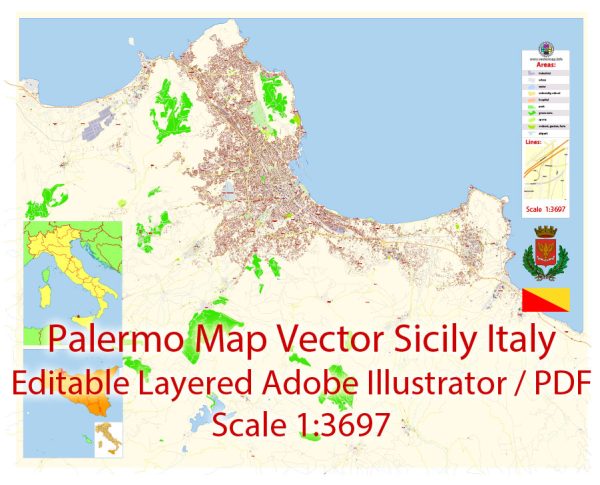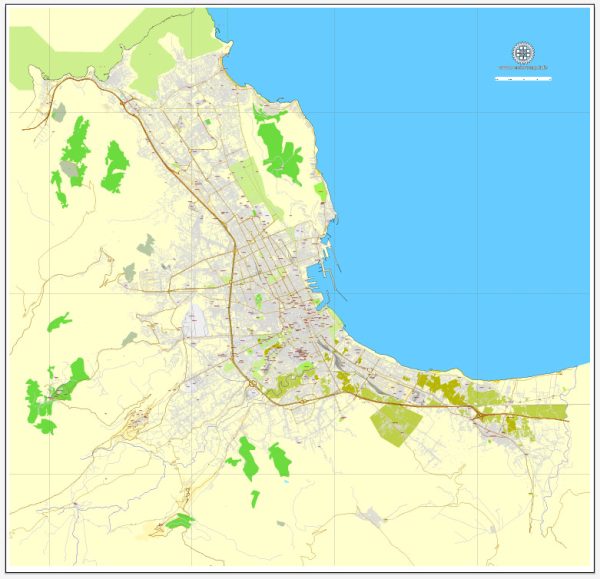Palermo, the capital city of Sicily, Italy, is known for its rich and diverse architectural heritage, reflecting the city’s long history of various influences, including Roman, Arab, Norman, Byzantine, and Baroque. Here’s a brief description of the architectural styles and landmarks you can find in Palermo:
- Norman-Arab Architecture: Palermo is famous for its Norman-Arab architecture, which is a unique blend of Islamic and Christian design elements. The most iconic example of this style is the Palermo Cathedral (Cattedrale di Palermo). The cathedral features a mix of Arabic-style arches, Byzantine mosaics, and Gothic elements. The Royal Palace of Palermo (Palazzo dei Normanni) is another notable example, with its striking Arab-Norman elements and the famous Cappella Palatina, adorned with stunning mosaics.
- Baroque Architecture: The Baroque period in Palermo, which was prominent during the 17th and 18th centuries, left a significant imprint on the city. The Quattro Canti, also known as Piazza Vigliena, is a Baroque square at the intersection of two main streets, where you can admire the Baroque facades of the surrounding buildings. The Church of San Giuseppe dei Teatini, with its ornate Baroque interior, is a notable religious building.
- Palaces and Palazzos: Palermo boasts numerous grand palaces and palazzos that showcase different architectural styles. The Palazzo Chiaramonte, also known as the Steri, features Gothic elements, while the Palazzo Abatellis showcases Catalan Gothic architecture. The Palazzo Mirto, an aristocratic residence, is an excellent example of a Rococo-style palace.
- Arab Influence: Palermo’s history includes a period of Arab rule, which has left its mark on the city’s architecture. You can see traces of Arab influence in elements like horseshoe arches, decorative stucco work, and intricate tile patterns on some buildings.
- Churches and Monasteries: The city is home to many historic churches and monasteries, each with its unique architectural features. The Church of San Cataldo, with its distinctive red domes, is a prime example of Norman-Arab architecture. The Monreale Cathedral, located just outside Palermo, is renowned for its stunning Byzantine mosaics.
- Art Nouveau (Liberty) Style: In the early 20th century, the Art Nouveau (known as “Liberty” in Italy) movement had an impact on Palermo’s architecture. You can find Art Nouveau elements in some residential buildings and villas, characterized by flowing lines, floral motifs, and decorative ironwork.
- Modern and Contemporary Architecture: Palermo also has its share of modern and contemporary architectural landmarks, with several museums, galleries, and government buildings designed in contemporary styles.
Palermo’s architectural diversity is a testament to its history as a melting pot of cultures and influences. Exploring the city’s streets, you’ll encounter a unique blend of architectural styles that tell the story of its complex past.



 Author: Kirill Shrayber, Ph.D.
Author: Kirill Shrayber, Ph.D.